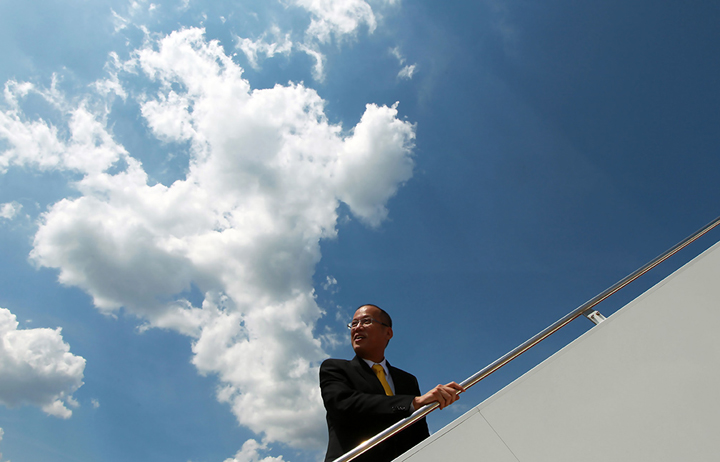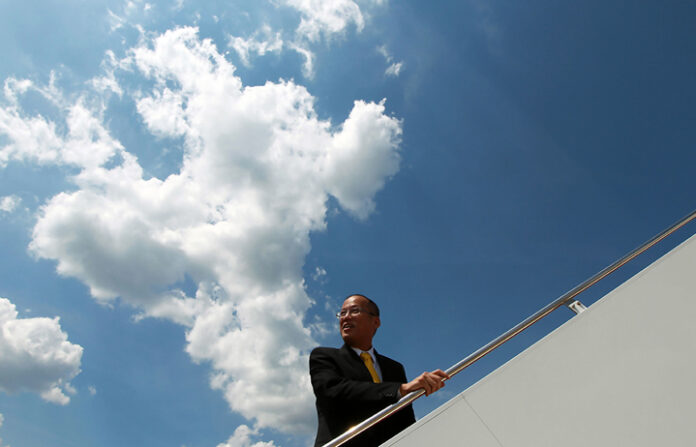
THE reforms implemented by former President Benigno “Noynoy” S. Aquino III strengthened the country’s macroeconomic fundamentals, which enabled the Philippines to bag its first investment grade rating, expand GDP by 6.2 percent and lift millions out of poverty during his term.
In 2013, the Philippines was categorized as an “investment grade” sovereign by all three international credit watchers: Fitch Ratings, S&P Global Ratings and Moody’s Investors Service.
An investment grade rating means that the sovereign has been deemed to have a “strong capacity” to repay financial obligations and have a very low risk of defaulting. Investment grade ratings are usually given to countries with strong macroeconomic, monetary and fiscal fundamentals.
In March 2013, Fitch Ratings first gave its nod of confidence to the Philippine economy by upgrading its rating from BB+ to the minimum investment grade BBB-. Fitch cited the country’s “stronger and less volatile growth” compared to its peer countries during the period.
“The Philippine economy has been resilient, expanding 6.6 percent in 2012 amid a weak global economic backdrop. Strong domestic demand drove this outturn,” Fitch Ratings said.
The rating was also hinged on the administration’s “good governance” agenda.
“Governance reform has been a centerpiece of the Aquino administration’s policy efforts. Entrenching these reforms by 2016 is a policy priority of the government,” Fitch Ratings said.
Two months later, S&P Global Ratings followed and also upgraded the country’s rating from BB+ to BBB-. In October the same year, the Philippines completed its ascent to the investment grade territory after Moody’s also upgraded the country’s rating to Baa3.
“The new growth path is being reinforced in part by improved fiscal management. Revenue growth has accommodated sizable increases in infrastructure and social spending,” Moody’s said.
GDP growth
House Committee on Ways and Means Chairman Albay Rep. Joey Salceda said the stable macroeconomic policy of former President Aquino, who was a student of former President Gloria Macapagal-Arroyo, allowed GDP to grow by an average of 6 percent.
“Apart from posting an average real GDP growth rate at 6.2 percent, annual inflation during the late president’s term averaged 1.4 percent,” said Salceda.
He said Aquino was also able to increase the country’s employment rate from 92.7 percent in 2010 to 94.2 percent in January 2016, as well as increase infrastructure investment from 1.8 percent of GDP in 2010 to an average of 3 percent of GDP during his term.
“The Aquino administration was able to lift 7.7 million Filipinos out of poverty through its Pantawid Pamilyang Pilipino Program [4Ps] while its bottom-up budgeting program also allowed for more resources towards rural and poverty reduction programs.”
Salceda said the late president also improved the country’s fiscal policy, noting that there was an “almost consistent improvement” in the country’s revenue and tax performance and his sin tax reform raised P60 billion in revenues.
During his term, the Philippines became a net contributor to the International Monetary Fund (IMF), making available $251.5 million to the IMF to finance the assistance program—the Financial Transactions Plan—for crisis-stricken countries.
Meanwhile, Finance Secretary Carlos G. Dominguez III credited the Aquino administration with enacting Tax Incentives and Management and Transparency Act and sin tax laws which shaped the country’s economic growth prior to the pandemic.
Dominguez told reporters the TIMTA law, which forced disclosure and subsequent analysis of the amount of foregone revenue due to fiscal incentives granted to registered companies, resulted in the formulation and enactment of Corporate Recovery and Tax Incentives for Enterprises.
As for the sin tax laws which raised the excise tax on sin products and reduced it to only one rate the number of categories of taxes on cigarettes, Dominguez said this “laid the groundwork for increasing excise taxes on cigarettes as well as the enactment of legislation on excise tax on sugary drinks.”
Rice sufficiency
During the Aquino administration, the Philippines achieved its highest rice self-sufficiency rate (SSR) since becoming a member of the World Trade Organization in 1995.
Historical Philippine Statistics Authority (PSA) data showed that the country achieved a rice SSR of 96.8 percent in 2013 on the back of higher domestic harvest. The country produced 18.44 million metric tons (MMT) of palay in 2013, which was 2.2 percent higher than the 18.03 MMT recorded in 2012.
PSA data further showed that rice imports in 2013 declined by 61.72 percent to 402,712.311 MT from 1.052 MMT in 2012.
While his goal of zero rice imports by 2013 did not materialize, the country had significantly reduced its purchases of the imported staple that year, based on historical PSA data.
Anti-trust, DICT
In a bid to accelerate infrastructure to sustain the country’s economic growth, Aquino also signed Executive Order 8 renaming the Build-Operate-Transfer Center as the Public-Private Partnership (PPP) center to specifically cater to projects undertaken via BOT, build-lease-transfer, and other private-public sector undertakings.
During his term, he signed into law the Philippine Competition Act or the Republic Act 10667 establishing the Philippine Competition Commission. The law disallows abuse of dominant position, anticompetitive agreements, mergers and acquisitions.
The former chief executive also approved the creation of the Department of Information and Communications Technology (DICT) for the planning, development and promotion of the country’s information and communications technology.
The Makati Business Club (MBC) said the economic policies during the Aquino administration encouraged the private sector to fund investments that boosted employment in the country.
MBC Executive Director Coco Alcuaz, in a message to the BusinessMirror, praised the initiatives of the former top executive as they helped in boosting the economy.
“History will judge President Aquino well because he combined pro-people social policies—modernizing education, expanding cash transfers, for example—with relatively clean government,” Alcuaz said. “That meant taxes went to public services and infra, while foreign and local businesses were excited to make job-creating investments.”
Philippine Chamber of Commerce and Industry (PCCI) Chair Alegria Limjoco also commended the Aquino administration for bringing in more investors following the Asia-Pacific Economic Cooperation (APEC) Ministerial Meeting in 2015.
“At the time, economy started picking especially after the successful holding of the 2015 APEC leaders’ meeting,” she said.
“On the back of his high-profile campaign to weed out corruption and the excellent performance of the GDP, the inflow of foreign direct investment steadily improved, rising by 60 percent when stepped down from office,” PCCI President Benedicto V. Yujuico said in a separate statement.
The Management Association of the Philippines, meanwhile, lauded Aquino for fostering “impressive economic growth, with four credit rating upgrades and a significant increase in foreign direct investments, aided by his focus on transparency and good governance.”
In 2011 to 2016, the country’s total trade registered a compounded annual growth rate of 4.9 percent, according to the PSA. Bianca Cuaresma, Jovee Marie N. Dela Cruz, Jasper Emmanuel Y. Arcalas, Bernadette D. Nicolas and Tyrone Jasper C. Piad
Image courtesy of Jay Morales/Malacaang Photo Bureau
Read full article on BusinessMirror

